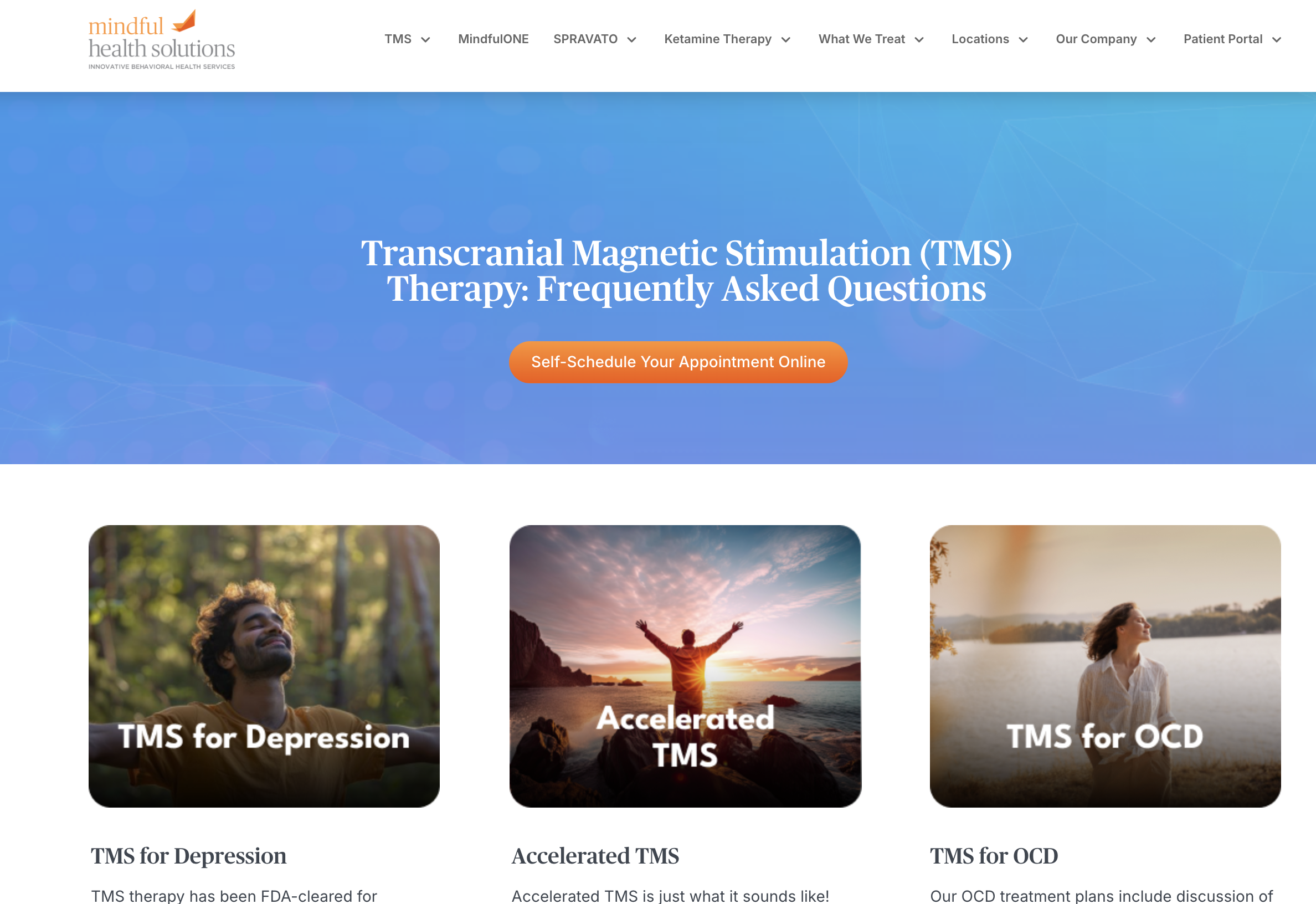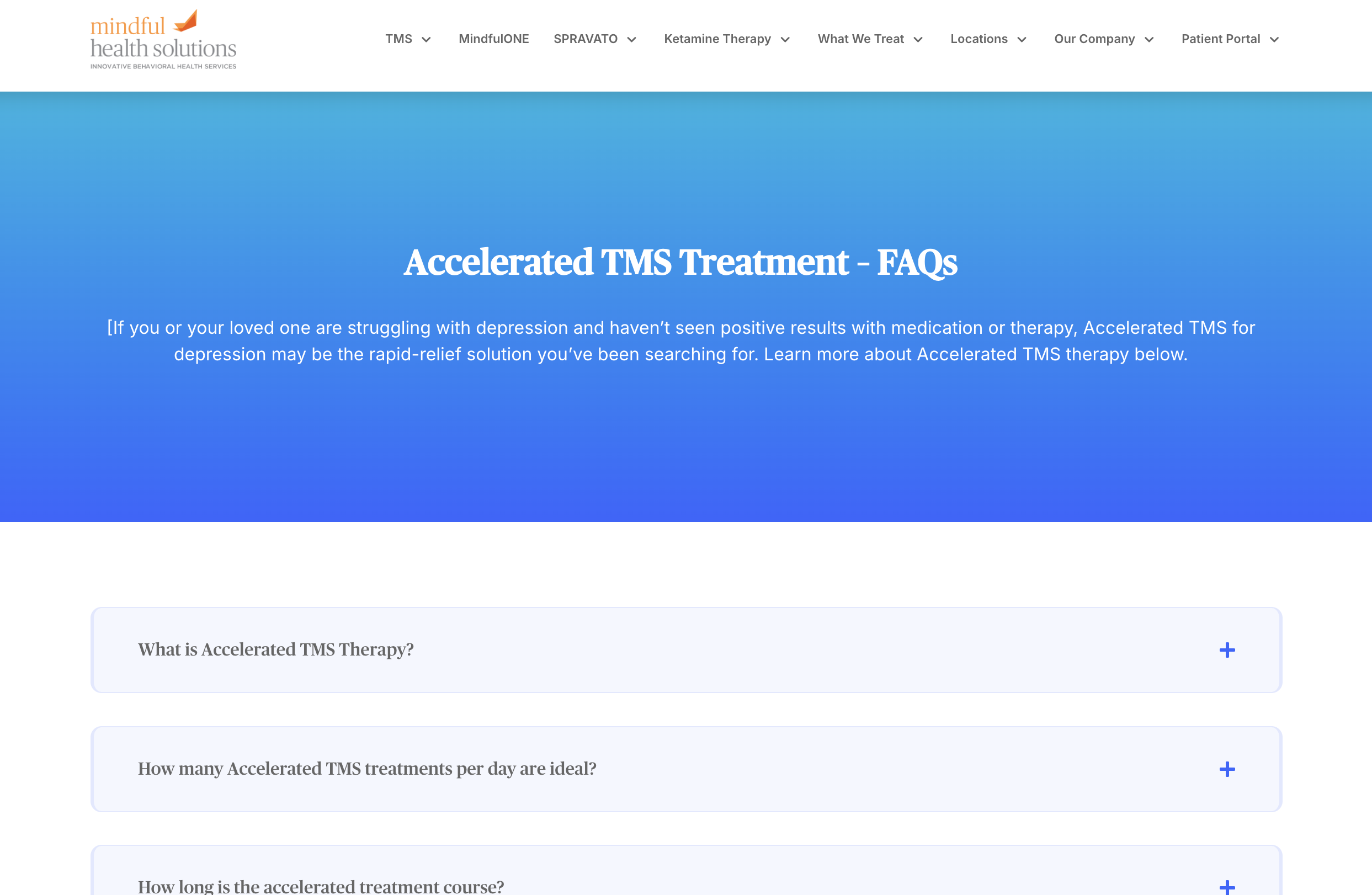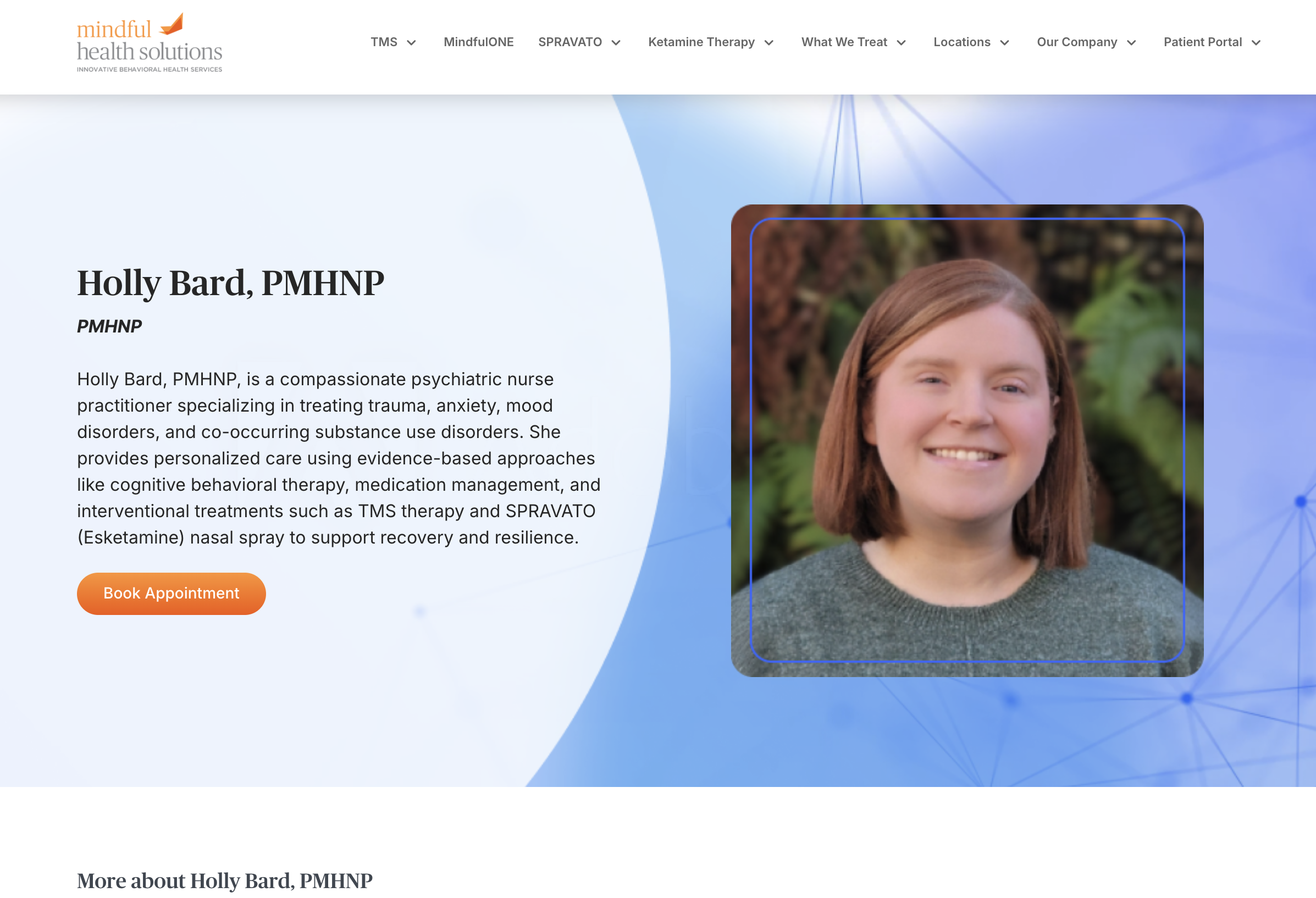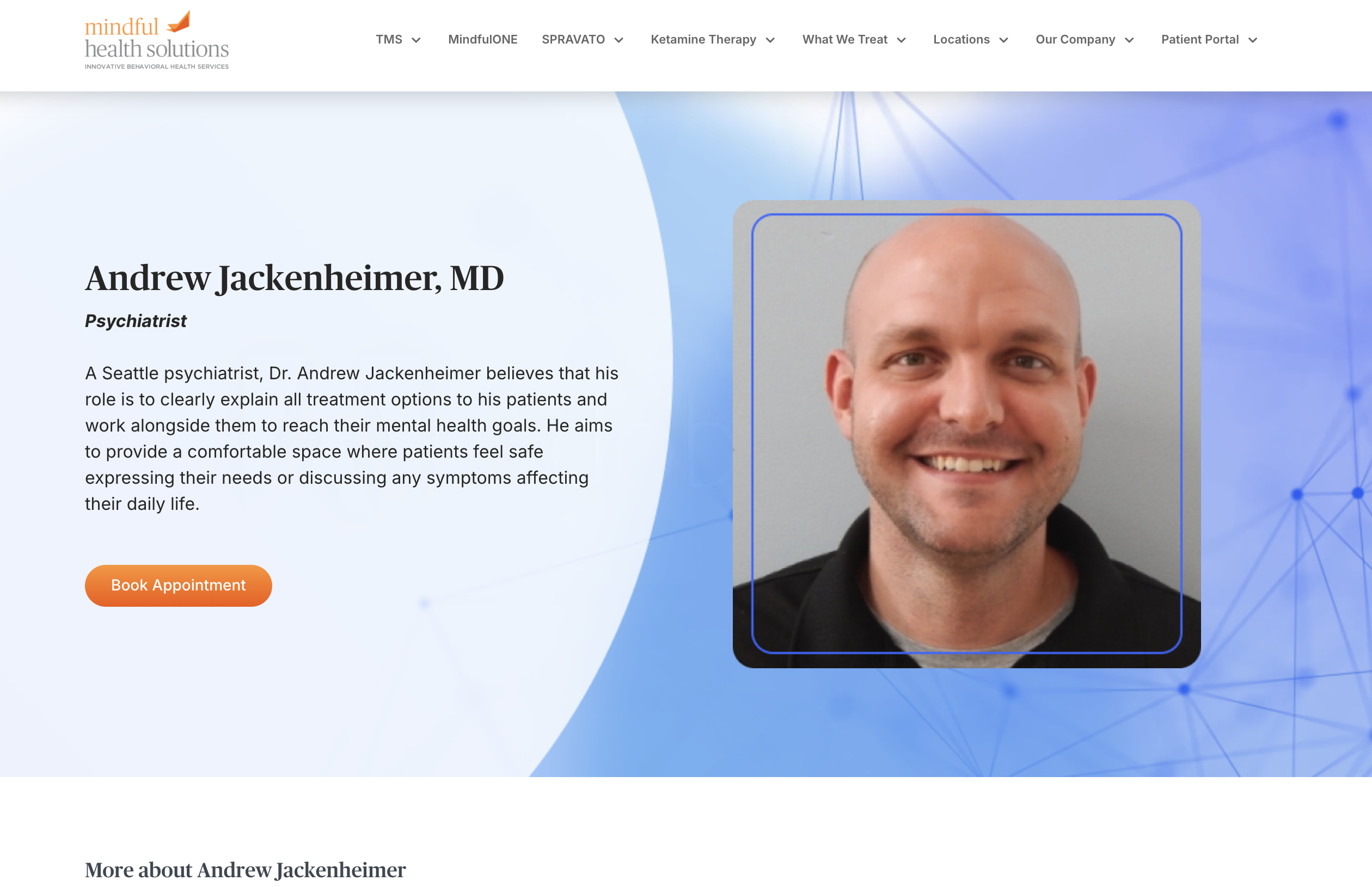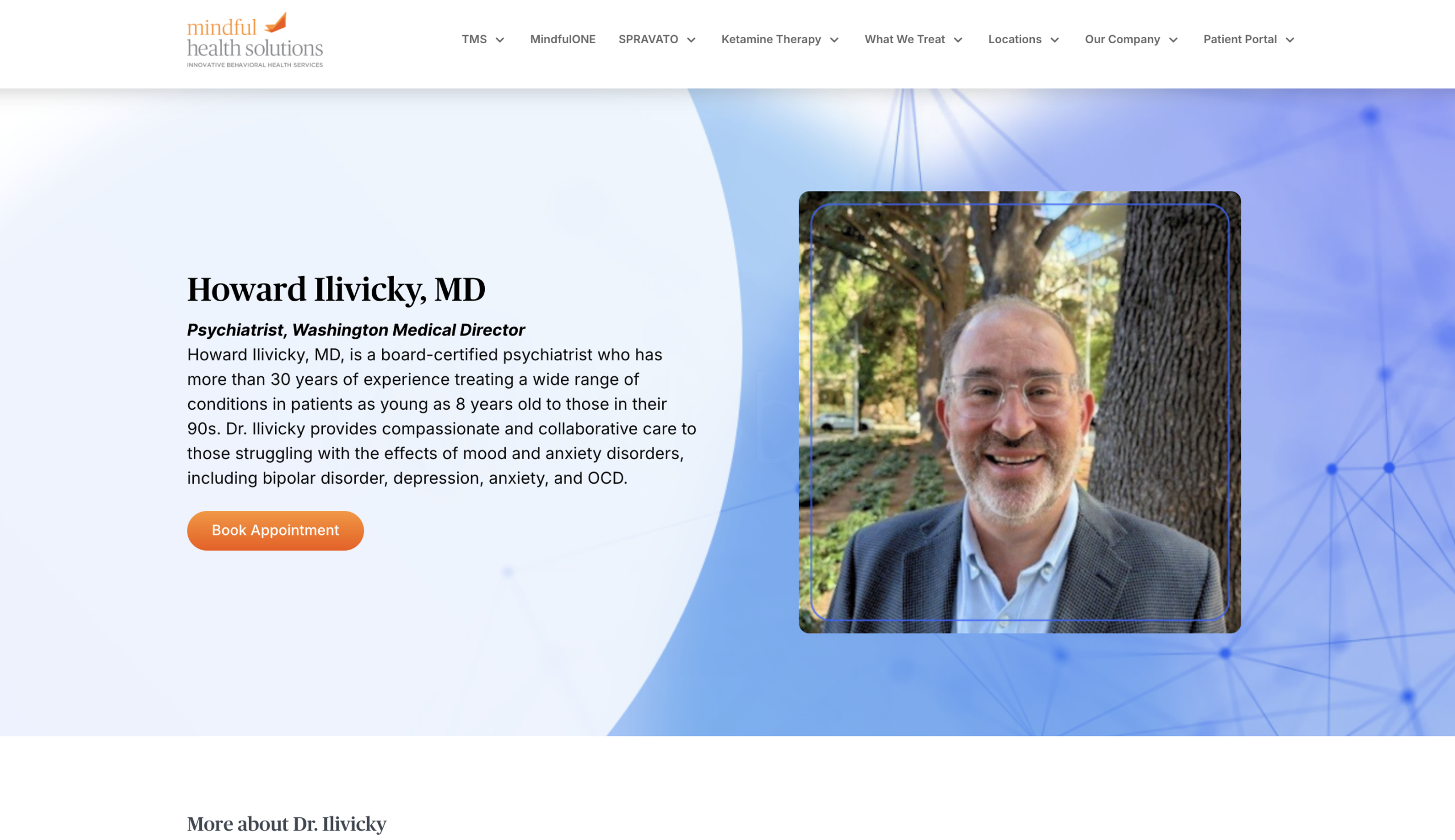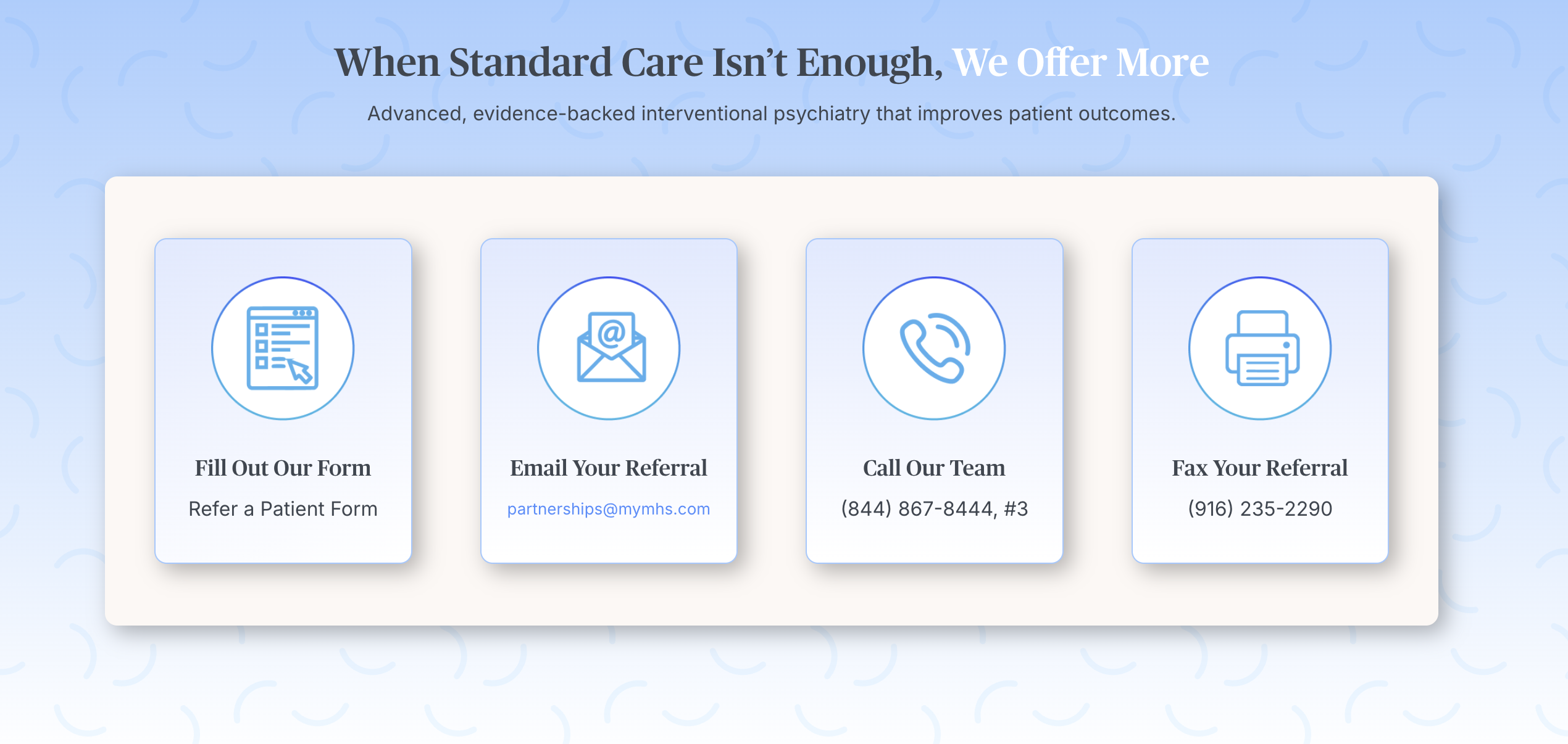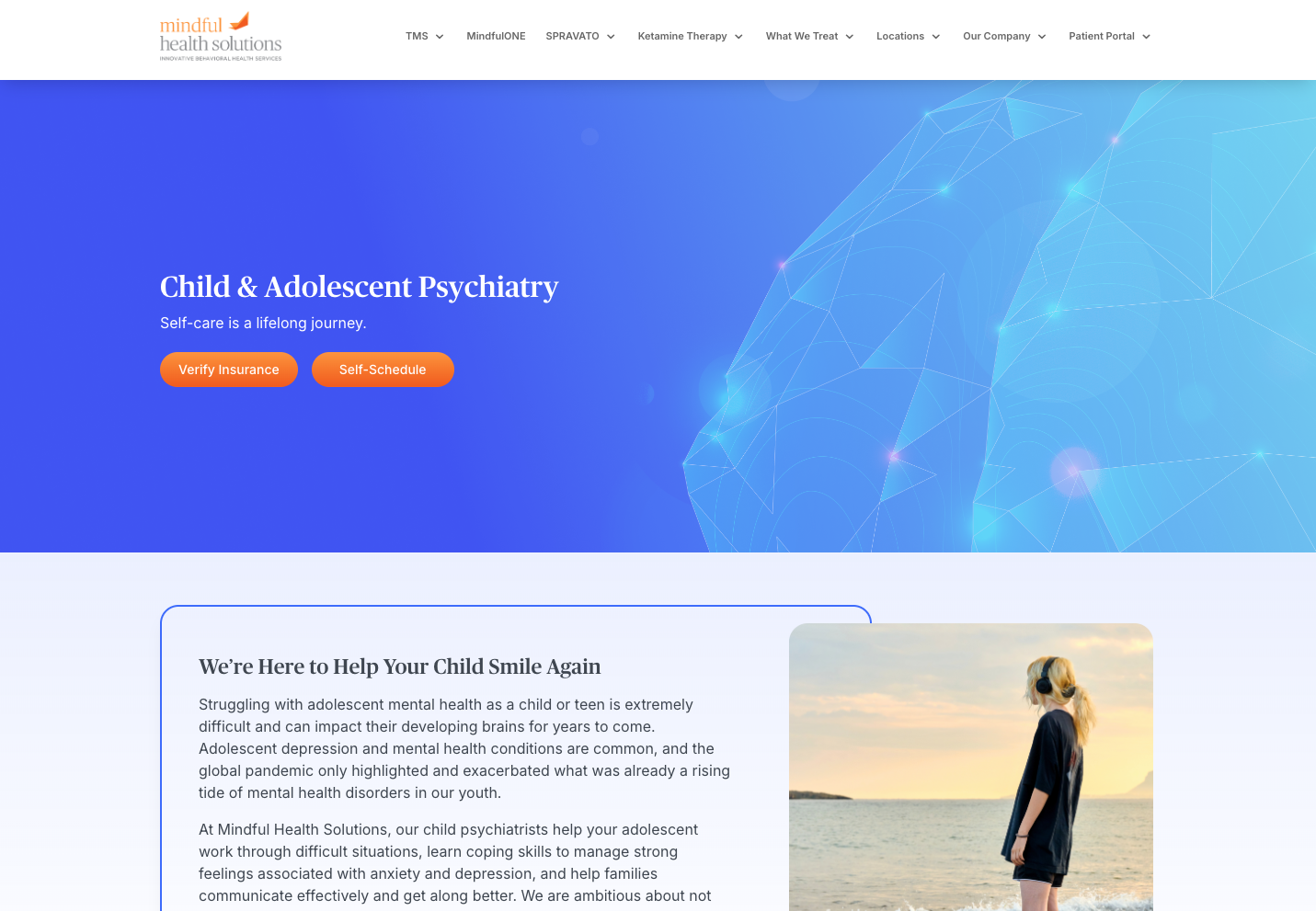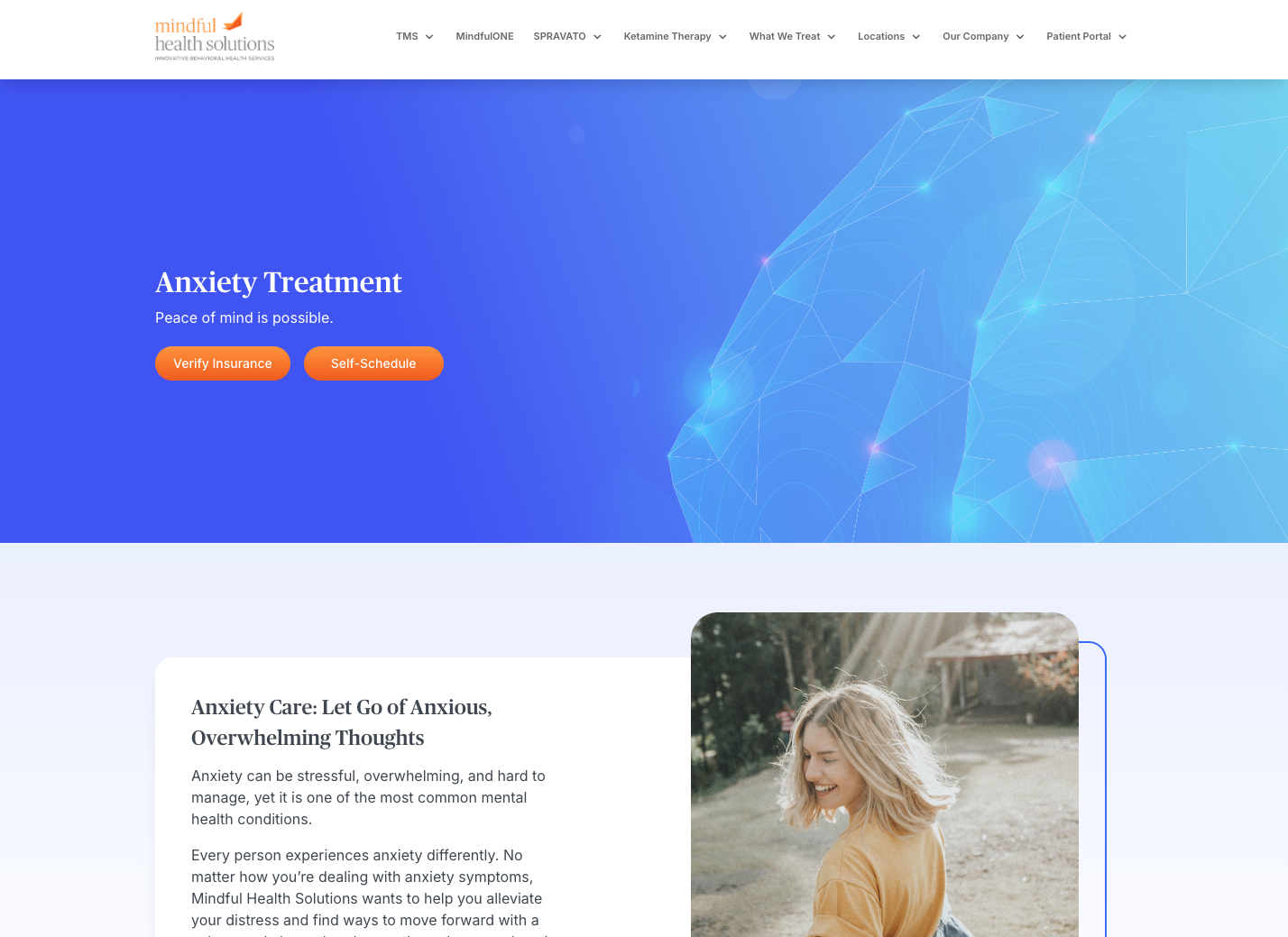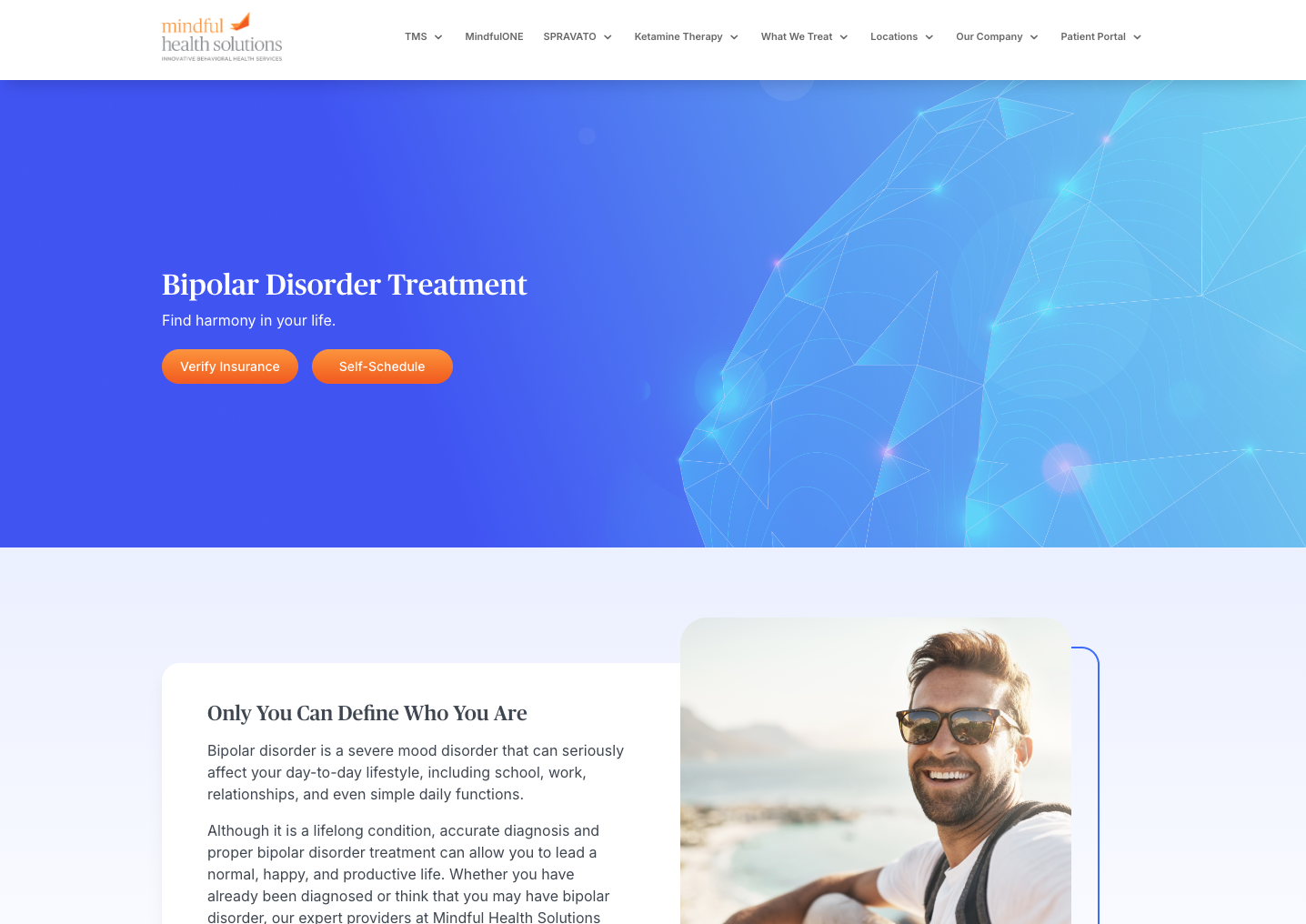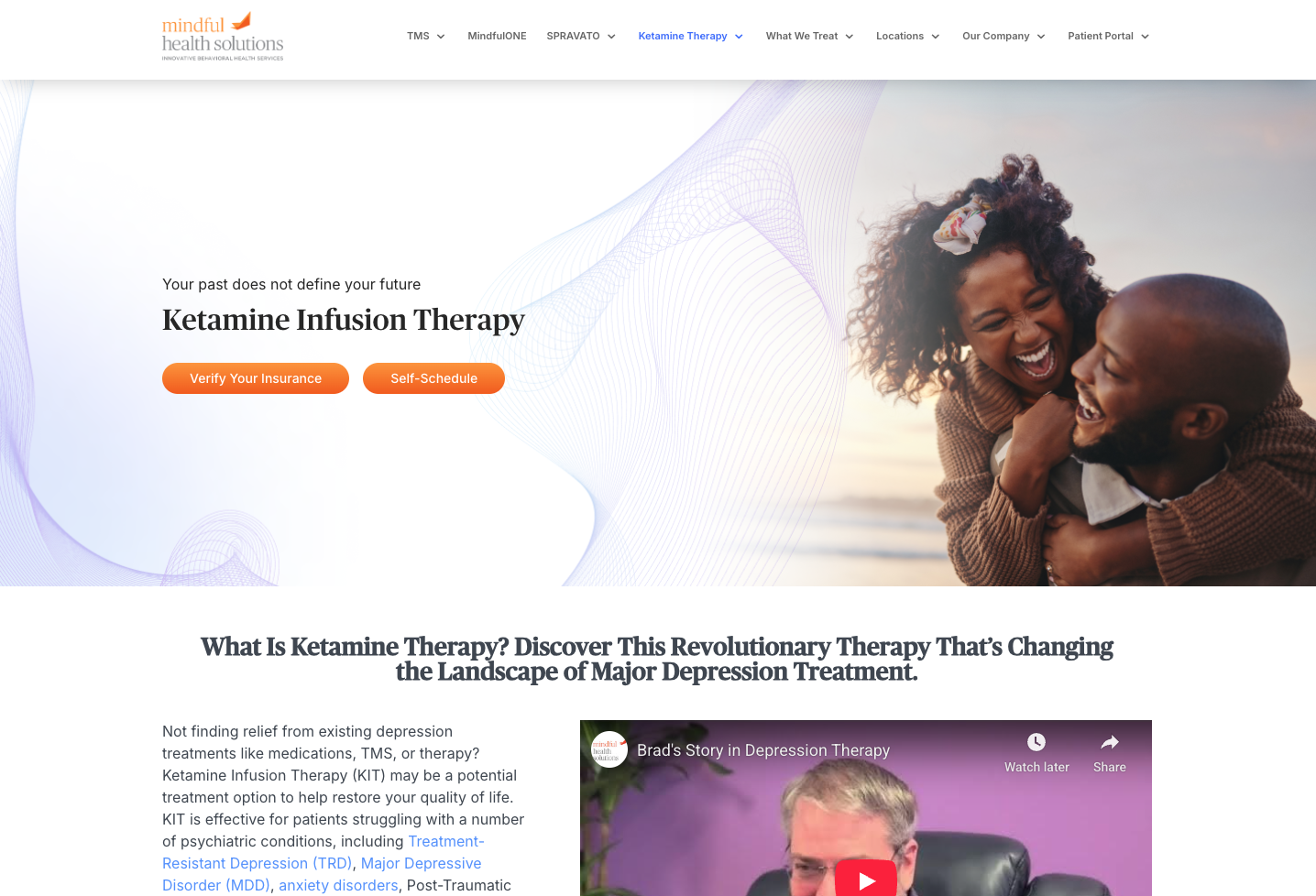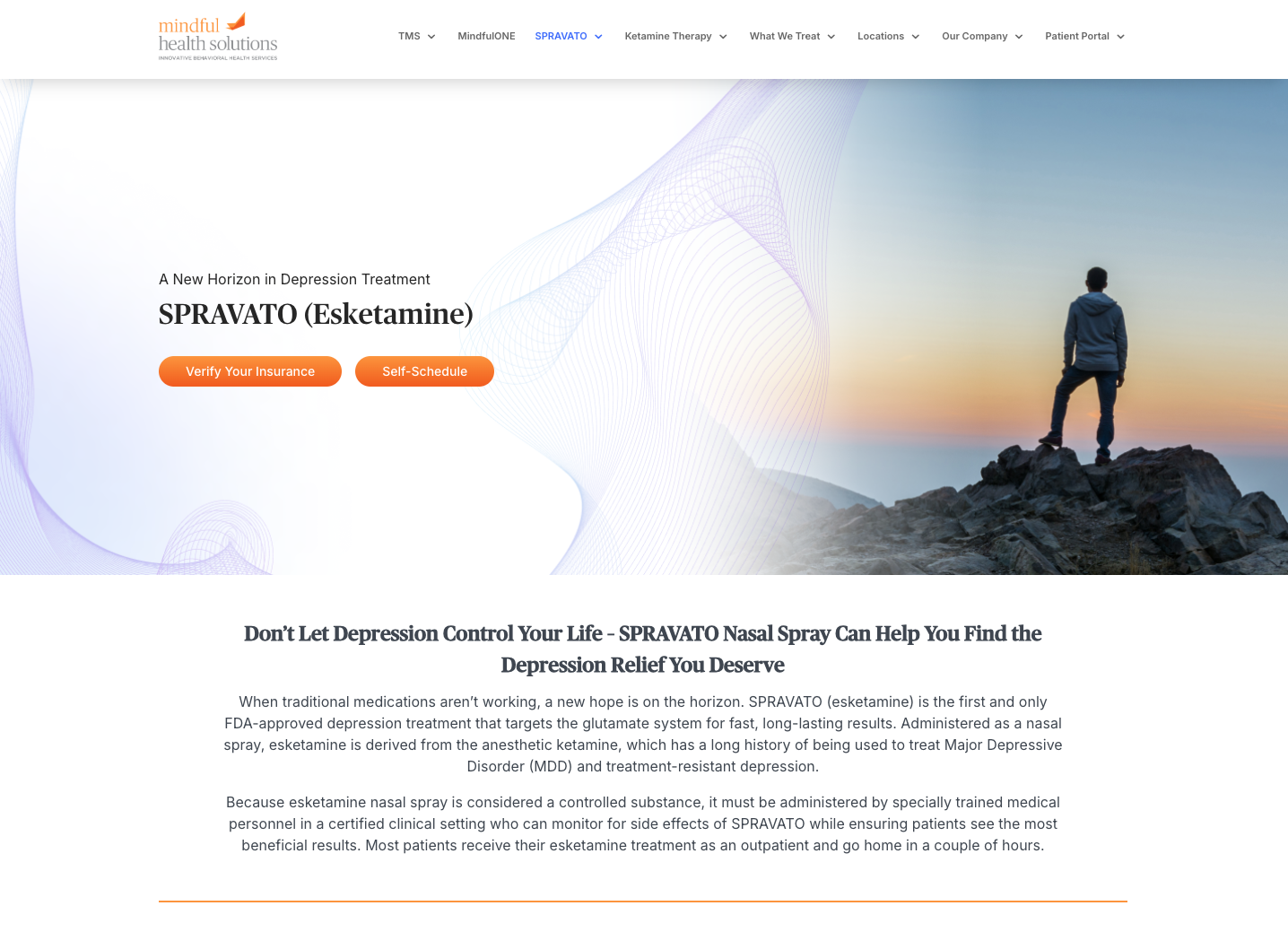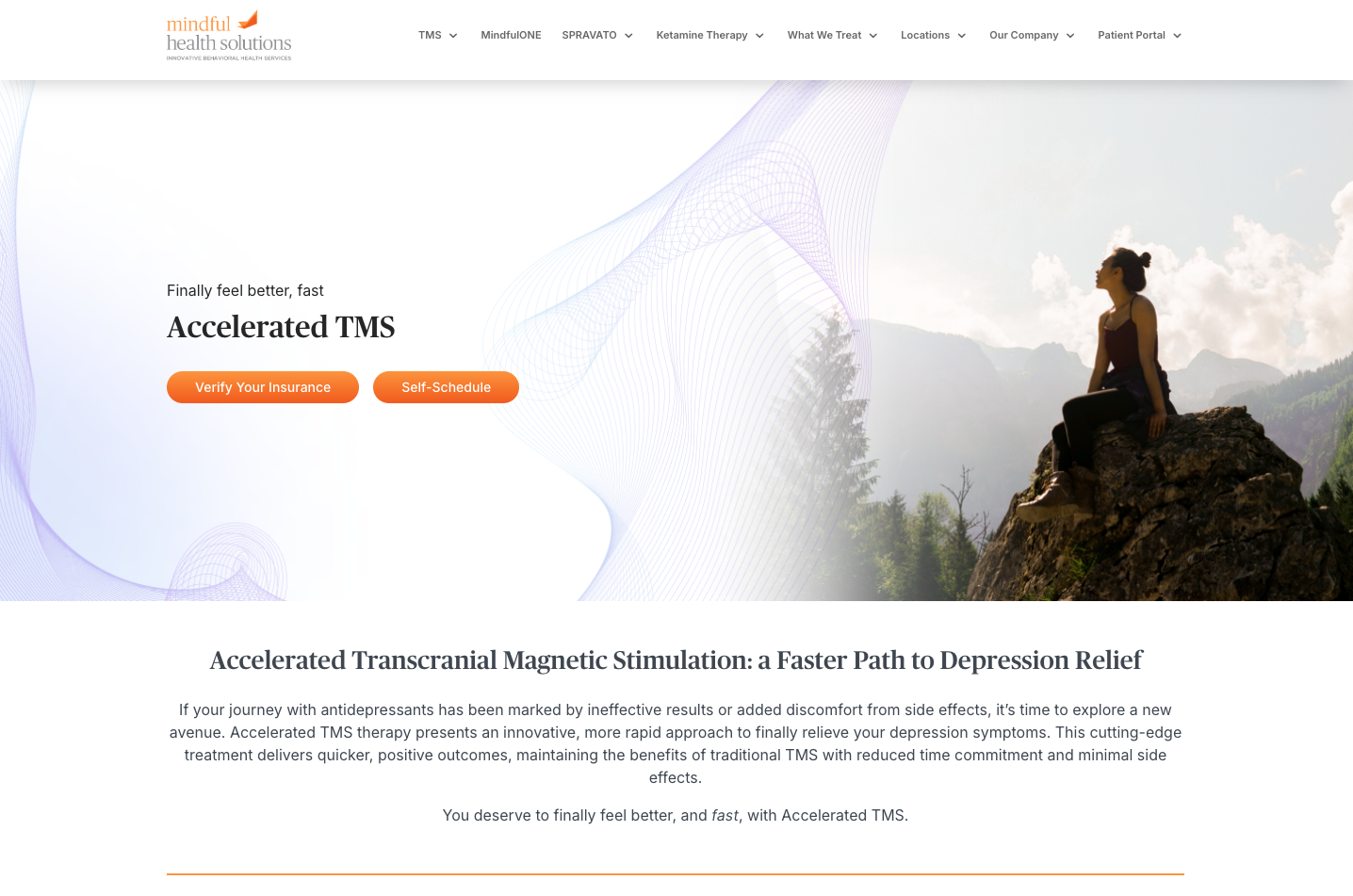Mental health care is changing, and that’s exciting. People can get the relief they need faster and feel its effects longer. Rather than just addressing the symptoms, treatments can address the problem. One treatment option that can do just that is TMS therapy. Keep reading to learn what TMS is, how it works, what it can treat, and how successful it is. It might just be a treatment option that could work for you.
What Is Transcranial Magnetic Stimulation (TMS)?
Transcranial Magnetic Stimulation (TMS) therapy is an innovative treatment for people struggling with depression or other mental health conditions. It is typically included in a person’s treatment plan when they aren’t finding relief from psychotherapy or medication management alone. It is a safe, non-invasive, non-medication treatment that uses magnetic fields to stimulate the specific part of the brain known to control mood.
How TMS Therapy Works for Depression Treatment
Okay, we know that brain stimulation by magnetic fields sounds a little scary. However, you won’t feel any pain during or after treatment. What happens is that localized electromagnetic pulses are delivered via a magnetic coil to the prefrontal cortex, which is the area of your brain that regulates mood. And just like you don’t feel any pain if you run your hand between two attracting magnets, you don’t feel any pain during a TMS session.
These magnetic pulses stimulate nerve cells, particularly neurons, which release neurotransmitters and hormones such as serotonin and dopamine. These neurotransmitters work to relieve symptoms of depression. Once these neurons are stimulated by TMS, they continue to release these neurotransmitters for a longer period of time compared to other treatments like antidepressants.
Transcranial Magnetic Stimulation: A Non-Invasive Treatment
While receiving TMS, you sit in a comfortable chair, and a clinician places the TMS headpiece on you. While the TMS device is doing its thing, you can watch TV, listen to music, or talk with our staff. If you’re comfortable with it, you can also have a friend or family member in the room with you during your session.
Each treatment lasts about 20-30 minutes, and does not require anesthesia. Generally, the full course of treatment will be five days a week for four to six weeks. We know that coming in five days a week for weeks on end is a commitment, but the results could impact your mental well-being for a lifetime.
What Transcranial Magnetic Stimulation Can Treat
In 2008, TMS therapy was approved by the FDA to treat depression symptoms. Since then, further studies have shown that it has the potential to treat a wide range of conditions, many of which can be debilitating. Although our team at Mindful Health Solutions focuses primarily on alleviating the symptoms of treatment-resistant depression, our clinics also provide treatment for other conditions like:
- Anxiety
- Autism in adults
- Bipolar disorder
- Body dysmorphia
- Certain types of chronic pain
- Memory disorders
- Migraines
- Mild cognitive impairment
- Mild dementia
- Multiple sclerosis
- Obsessive-compulsive disorder (OCD)
- Parkinson’s disease
- PTSD
- Smoking cessation
There is also evidence TMS may help in recovery from stroke. Research and studies on the amazing impact of TMS are continuing, and we at Mindful Health Solutions are excited to be at the forefront of it.
TMS is Safe and Has Little Side Effects
TMS is a safe treatment. Since it was approved by the FDA (Food an Drug Administration) for the treatment of depression in 2008, there have been millions of individual treatment sessions performed in the United States. We also want to emphasize that the clinicians who administer TMS treatments are professionally trained and put each patient’s comfort first.
As mentioned above, TMS treatments do not hurt during or after each session. Regarding side effects, there are very few. Most are mild and short-lasting, and can include:
- Headaches
- Sleepiness
- Lightheadedness
- Scalp discomfort
- Twitching or tingling of the facial muscles
Many patients find it to be uncomfortable on their scalp or may hear a repetitive clicking sound, or experience mild headaches, all of which are common during the first few treatments, but these usually go away within the first two weeks as people get used to the sensation. Patients rarely drop out of TMS because of side effects.
More serious side effects happen very rarely, but can consist of:
- Seizures
- Hearing problems from the loud clicking noise that occurs during treatment
- Mania, which is more likely to occur if an adolescent has bipolar disorder
However, our expert providers will use their professional knowledge to help avoid serious side effects like the ones listed above.
The Success of Transcranial Magnetic Stimulation
A more traditional treatment option for mental health conditions, especially depression, is the use of antidepressants. Antidepressants are invaluable aids in the treatment of clinical depression and other mood disorders, but they’re not for everyone. According to the World Journal of Psychiatry, antidepressants don’t improve symptoms in 10–15 percent of people with depression and only partially improve symptoms in 30–40 percent. Also, many people experience side effects from antidepressants that can impact their overall well-being.
On the other hand, TMS therapy has shown significantly better results than antidepressants with a small risk of experiencing mild, short-term side effects. One in two patients treated with TMS had a 50% reduction in their symptoms, and about 30% of patients experienced full remission (their symptoms completely went away).
While most patients begin to show improvement after two to three weeks, it can take up to six weeks to achieve the maximum benefits of TMS treatments.
How To Get on a TMS Treatment Plan
If you want to add TMS therapy to your treatment plan, the first step is to talk to your doctor or provider. Typically, patients have to try and not find success with at least two different medications or antidepressants before being permitted to try TMS therapy. Your doctor will also consider your medical history to make sure TMS is a safe and effective option for you. And of course, you get the final say in whether you want to try TMS as a treatment option.
Getting TMS Therapy at Mindful Health Solutions
If you’re considering TMS therapy as a possible treatment option, then we invite you to consider us as your TMS provider. We have been providing TMS treatments to patients for years, and have seen so many successful outcomes.
Learn about how TMS transformed the life our patient, Chrissy.
At Mindful Health Solutions, our providers understand that you are unique. They are ambitious about working with you to find a solution that works. They don’t want to simply alleviate your symptoms. Your provider will work with you to help you find joy.
And last but not least: we accept most major insurances.
Getting mental health care doesn’t have to be hard or scary. There is a light at the end of the tunnel, and it’s possible that you could get to that light faster with TMS therapy. If you’re interested in learning more about how TMS could work for you, contact us today. We want to help.


